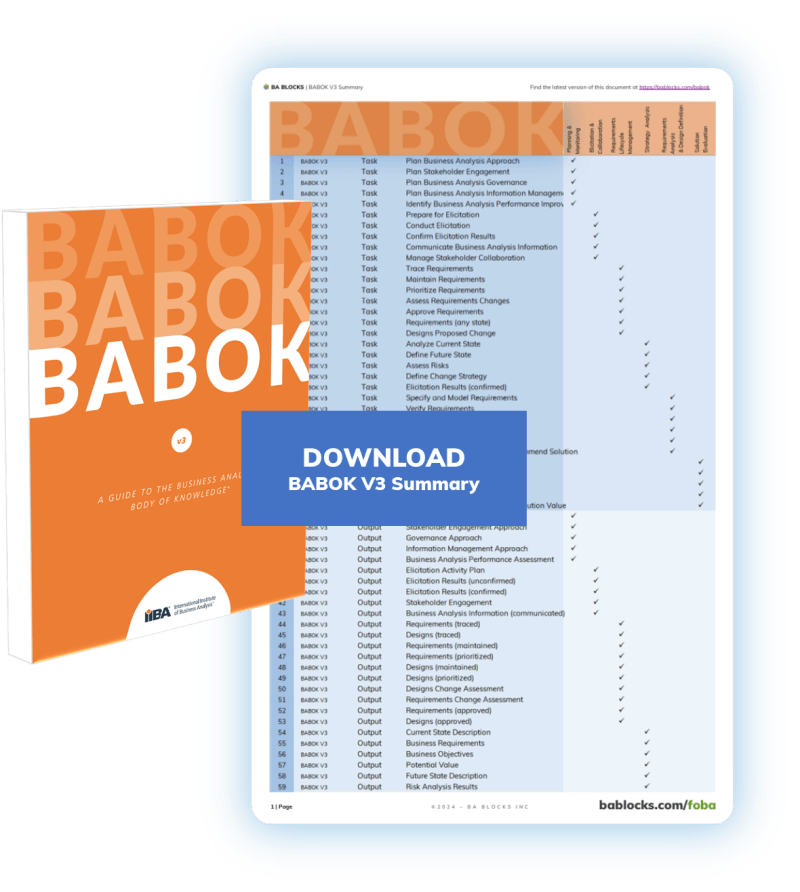What is the BABOK?
The Business Analysis Body of Knowledge® (BABOK® Guide) is the globally recognized standard for the practice of business analysis. The BABOK® Guide describes the knowledge, skills, and underlying competencies that business analysis practitioners around the world agree are essential to the profession. The purpose of the BABOK® Guide is to define business analysis and to create a common understanding of the profession.
See how FOBA can take you beyond the theory to teach you business analysis through a project..


